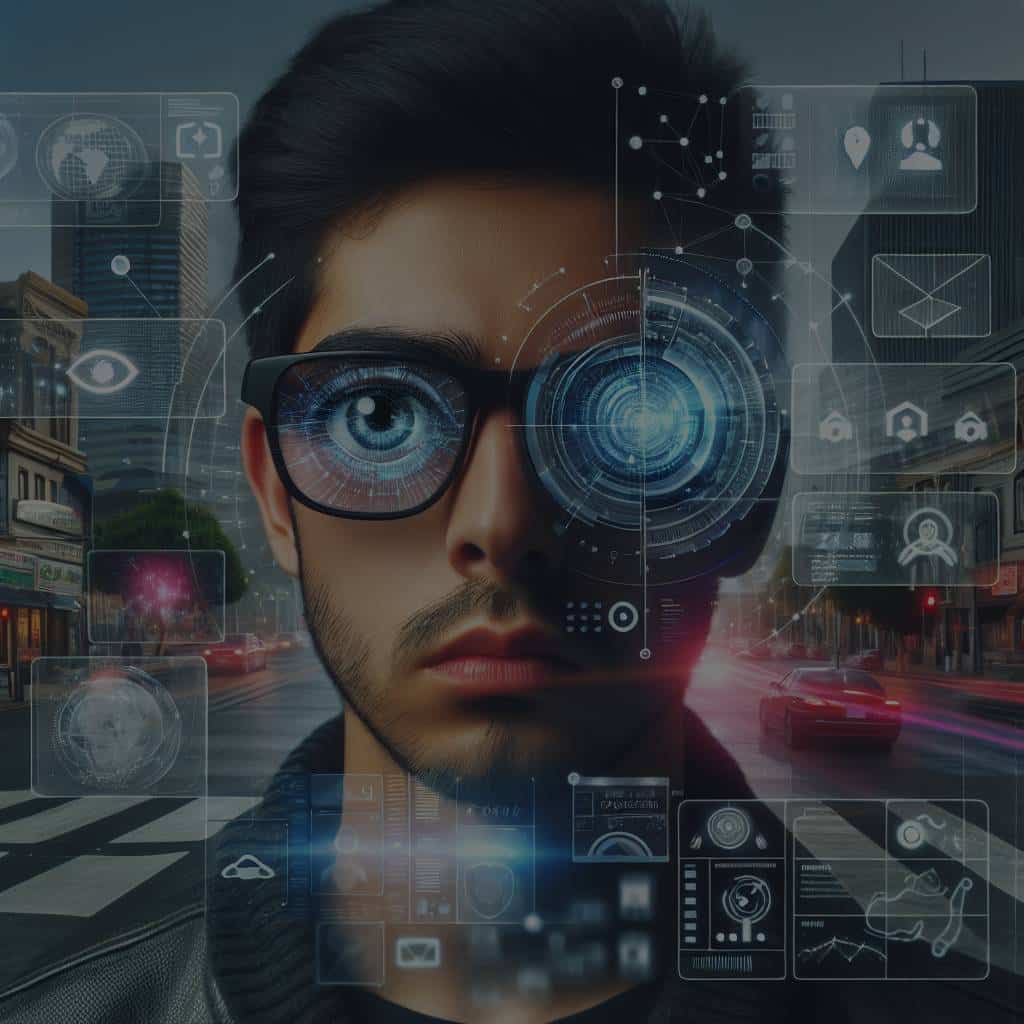Imagine a world where all the information you need is directly displayed in front of your eyes. Instead of pulling out your smartphone to check the weather, you just glance at the sky and the data appears in your field of vision. No need for glasses or cumbersome virtual reality headsets, all of this is possible using smart contact lenses.
These smart lenses are among the latest advancements in augmented reality technology. They can transform the way we see and interact with the world, offering unprecedented flexibility and freedom. But how does this futuristic innovation work? And more importantly, how will they change our daily lives?
This might interest you : How Are Ultra-Low Power Processors Enabling the Next Generation of IoT Devices?
The Technology Behind Smart Contact Lenses
Smart contact lenses, also known as smart lenses, are a prime example of state-of-the-art technology. These are not your ordinary contact lenses. They are equipped with miniaturized electronics and sensors that overlay images, videos, and helpful data directly onto your field of vision.
Imagine a contact lens that can provide real-time updates on your health status, display incoming messages, or even guide you to the nearest coffee shop. It’s like having a computer screen in your eye, but without the physical screen.
In the same genre : What Impact Will Autonomous Delivery Robots Have on Urban Logistics and Last-Mile Delivery?
The development and refinement of these lenses involve several complex processes. These include the embedding of circuits, LEDs, and antenna into a thin, flexible, and transparent material that can be comfortably worn over the eye. Despite their complexity, smart lenses are designed to be as light and non-invasive as possible.
Mojo Vision: The Forefront of Smart Lens Technology
One company leading the pack in the development of smart contact lenses is Mojo Vision. The company’s Mojo Lens, a smart contact lens, is currently under development and promises to offer a leap forward in the realm of augmented reality.
The Mojo Lens is designed to provide users with hands-free information without the need for a phone, watch, or other conventional screen. The idea is that wearers can simply look at something and see relevant data displayed. For example, looking at a restaurant could display reviews, menu information, or even book a table.
Mojo’s smart lenses also aim to assist people with visual impairments. The lenses can enhance reality, highlighting objects and text, enabling users with poor vision to see more clearly.
How Will Smart Lenses Change Our Daily Lives?
With smart lenses, the potential changes to daily life are plentiful. Imagine working out and having your heart rate, calories burned, and other health data displayed right in front of your eyes. You could check your emails, texts, or social media updates without taking your phone out of your pocket.
Furthermore, smart lenses could revolutionize professions such as medicine and engineering. Doctors could have immediate access to patients’ medical records, while engineers could visualize complex blueprints on-site. The possibilities are endless.
However, as with all new technology, there are potential drawbacks. Privacy concerns are a major issue, with the potential for personal data being displayed and potentially accessible to others. There are also health concerns about having electronic devices so close to the sensitive tissues of the eyes.
The Future of Augmented Reality: Virtual Becomes Reality
The concept of augmented reality (AR) is not new. However, AR has mostly been experienced through smartphones and bulky headsets. Smart contact lenses could change this, making AR more immersive, accessible, and integrated into our everyday lives.
Imagine walking down the street, and your smart lenses identify landmarks, display store hours, or even translate foreign languages in real time. Augmented reality could become just that – reality.
The future of smart contact lenses is bright and full of potential. As these lenses continue to be refined and developed, and as society begins to understand and accept this technology, the impact on our lives could be transformative.
In the end, smart contact lenses represent an exciting frontier in the ongoing quest to seamlessly blend technology and reality. They hold the promise of a future where technology is not just a tool, but an integral part of our visual and sensory experience. They are a testament to the unceasing march of innovation, and a glimpse into a future where the line between the virtual and the real is increasingly blurred.
Potential Uses and Challenges in Smart Contact Lenses
Smart contact lenses could be game-changers in several fields, such as healthcare, sports, entertainment, and education, among others. For instance, in healthcare, these lenses could be used for continuous health monitoring. They could measure intraocular pressure, track glucose levels in diabetic patients, or even deliver drugs to the eye in a controlled manner, thus replacing traditional contact lenses with therapeutic ones.
In sports and fitness, smart lenses could provide athletes with real-time data about their performance, heart rate, distance covered, and so on, enhancing their training routines. Similarly, in the realm of entertainment, these lenses could provide a much more immersive experience than current virtual reality headsets, offering a truly seamless blend of the virtual and the real.
In education, the possibilities are endless. Students could have access to interactive and immersive learning experiences, strengthening their understanding and retention of complex concepts. For instance, visualizing historical events, scientific phenomena, or mathematical models in real time could make learning more engaging and effective.
However, despite the immense potential, there are several significant hurdles to overcome. One of the primary concerns is data protection. As these lenses are connected to the internet and have access to personal and sensitive data, there is a risk of data breaches and misuse. Therefore, robust cybersecurity measures are crucial to ensure user privacy and data security.
Another significant challenge is ensuring user comfort and safety. The electronic components in these lenses must be sufficiently miniaturized and flexible so as not to cause discomfort or harm the eye. Furthermore, the lenses’ battery life, image quality, and user interface also need significant advancements.
Future Prospects and Conclusion
Looking forward, the scope of smart contact lenses is broad and exciting. Companies like Mojo Vision are at the forefront of this technology, striving to create lenses that can offer a seamless and enhanced visual experience. However, smart lenses are still in their infancy, and there are significant technical and ethical issues to resolve before they can be widely adopted.
It is also important to consider societal acceptance. While some may embrace this technology, others may find the idea of having electronic devices in their eyes uncomfortable or invasive. However, as with smartphones and smart glasses, it is likely that smart lenses will gradually become an integral part of our lives.
The future of augmented reality is promising, with smart contact lenses potentially playing a key role. They hold the potential to transform our interaction with the world, making everyday tasks more efficient and immersive. However, it is also essential to address the challenges and concerns surrounding this technology, to ensure its safe and beneficial use.
In conclusion, smart contact lenses represent a significant leap forward in augmented reality. The journey ahead is fraught with challenges, but the potential rewards are immense. As technology continues to advance, the line between reality and the virtual world is becoming increasingly blurred, leading us into a future where the two are indistinguishably interwoven.






